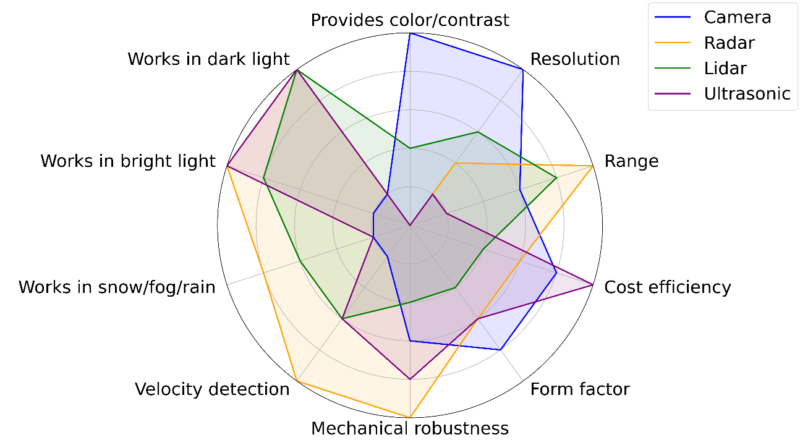Yêu cầu về cảm biến để phát triển hệ thống nhận thức môi trường mạnh mẽ
In recent years, sensor systems for environment perception have become increasingly important – whether for adaptive robotics, automated driving, industrial process and quality control, or condition monitoring. The aim is always to detect and interpret certain environmental characteristics. In doing so, it’s important to choose not only the right algorithm but also the right sensor or sensor system. The choice of sensor depends, of course, on its characteristics, but more importantly on the specific requirements of the application, the environmental conditions, the necessary precision and resolution, and how well it can be integrated into existing systems.
When selecting a sensor for environment perception, the first step is to define the requirements and specifications of the application. This raises the following questions:
- What kind of information should be collected – visual information, depth data, thermal imaging, etc.?
- What degree of precision and resolution is required – millimeter precision, centimeter precision, etc.?
- What is the required range – short range, medium range, long range, etc.?
- What are the environmental conditions – lighting, weather, dust, temperature, humidity, etc.?
- How well can it be integrated into existing system – interfaces, communication protocols, etc.?
- What real-time capabilities are required – real-time processing, latency, etc.?
- How big is the budget?
- Is the system safety- or security-relevant – vehicles, medical applications, etc.?
Based on these questions, it’s possible to derive certain performance indicators for the sensors. The following diagram depicts a qualitative comparison of the four most common sensor principles – camera, lidar, radar, and ultrasonic – as regards various performance indicators.
Fig. 1: Qualitative comparison of various performance indicators for camera, lidar, radar, and ultrasonic sensors.
Cameras offer high resolution and detailed visual information, but they are sensitive to lighting and weather conditions. Lidar delivers precise 3D data and is robust in the face of lighting changes, but is more expensive and sensitive to dirt. Radar’s standout capability is that it can deliver reliable measurements even in adverse weather and lighting conditions, but it achieves only a limited level of detail. Ultrasonic sensors are affordable and suitable for short-range sensing, but their range and resolution are limited.
In practice, sensors are often used in combination to benefit from the advantages of the different sensor principles and offset their disadvantages. For instance, a camera-radar combination can be used to gather both visual information and reliable distance measurements. What’s more, redundancy can increase the accuracy and reduce the likelihood of incorrect interpretation. This kind of sensor fusion requires additional computing power, however, placing increased demand on the computing unit.
Fraunhofer IIS/EAS wants to improve the efficiency of sensor selection and prototype development. In its AI Application and Test Center, it is working to develop reference platforms and testing environments for quantitative comparisons of environment perception sensor systems. This work takes into account both the raw sensor data and the algorithms and requisite (edge) computing units. To promote standardization, standards are being applied and developed. In the future, this will serve as a basis for robust environment perception in a wide range of applications.
Ron Martin
Ron Martin is a researcher for Perception Sensor Systems at Fraunhofer IIS’ Engineering of Adaptive Systems Division.


